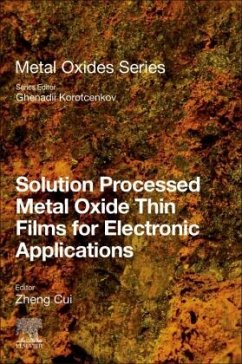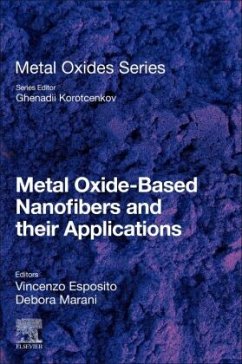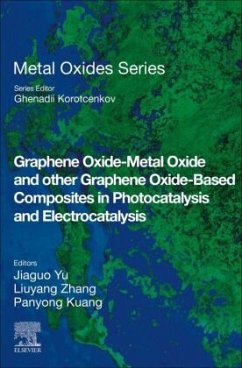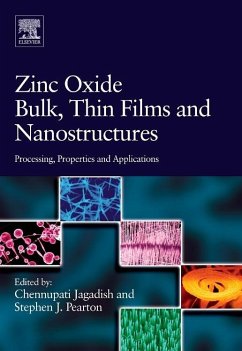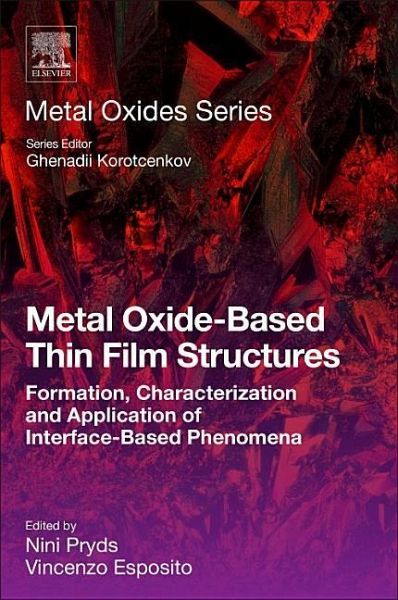
Metal Oxide-Based Thin Film Structures
Formation, Characterization and Application of Interface-Based Phenomena
Herausgegeben: Pryds, Nini; Esposito, Vincenzo
Versandkostenfrei!
Versandfertig in 6-10 Tagen
159,99 €
inkl. MwSt.

PAYBACK Punkte
80 °P sammeln!
Metal Oxide-Based Thin Film Structures: Formation, Characterization and Application of Interface-Based Phenomena bridges the gap between thin film deposition and device development by exploring the synthesis, properties and applications of thin film interfaces.Part I deals with theoretical and experimental aspects of epitaxial growth, the structure and morphology of oxide-metal interfaces deposited with different deposition techniques and new developments in growth methods. Part II concerns analysis techniques for the electrical, optical, magnetic and structural properties of thin film interfa...
Metal Oxide-Based Thin Film Structures: Formation, Characterization and Application of Interface-Based Phenomena bridges the gap between thin film deposition and device development by exploring the synthesis, properties and applications of thin film interfaces.
Part I deals with theoretical and experimental aspects of epitaxial growth, the structure and morphology of oxide-metal interfaces deposited with different deposition techniques and new developments in growth methods. Part II concerns analysis techniques for the electrical, optical, magnetic and structural properties of thin film interfaces. In Part III, the emphasis is on ionic and electronic transport at the interfaces of Metal-oxide thin films.
Part IV discusses methods for tailoring metal oxide thin film interfaces for specific applications, including microelectronics, communication, optical electronics, catalysis, and energy generation and conservation.
This book is an essential resourcefor anyone seeking to further their knowledge of metal oxide thin films and interfaces, including scientists and engineers working on electronic devices and energy systems and those engaged in research into electronic materials.
Part I deals with theoretical and experimental aspects of epitaxial growth, the structure and morphology of oxide-metal interfaces deposited with different deposition techniques and new developments in growth methods. Part II concerns analysis techniques for the electrical, optical, magnetic and structural properties of thin film interfaces. In Part III, the emphasis is on ionic and electronic transport at the interfaces of Metal-oxide thin films.
Part IV discusses methods for tailoring metal oxide thin film interfaces for specific applications, including microelectronics, communication, optical electronics, catalysis, and energy generation and conservation.
This book is an essential resourcefor anyone seeking to further their knowledge of metal oxide thin films and interfaces, including scientists and engineers working on electronic devices and energy systems and those engaged in research into electronic materials.




